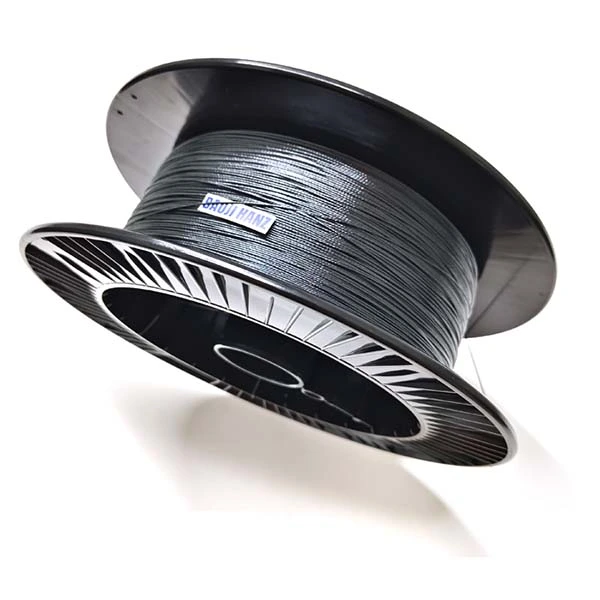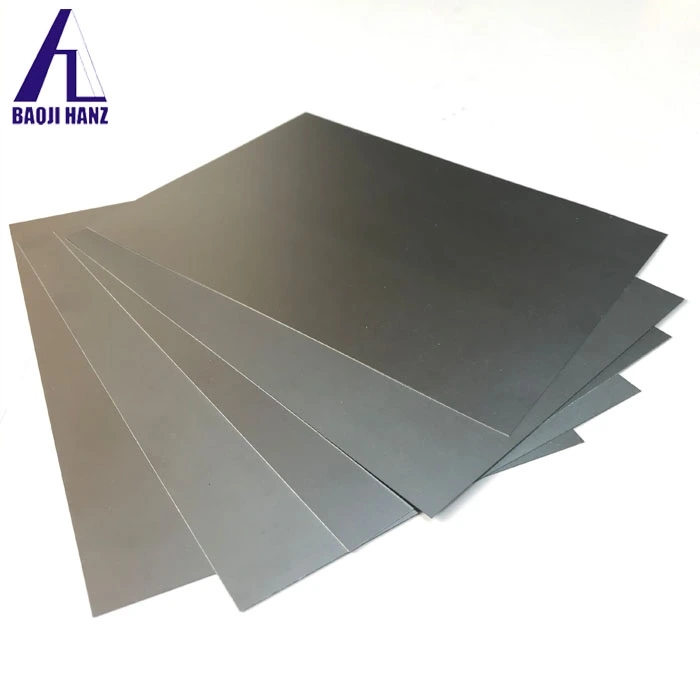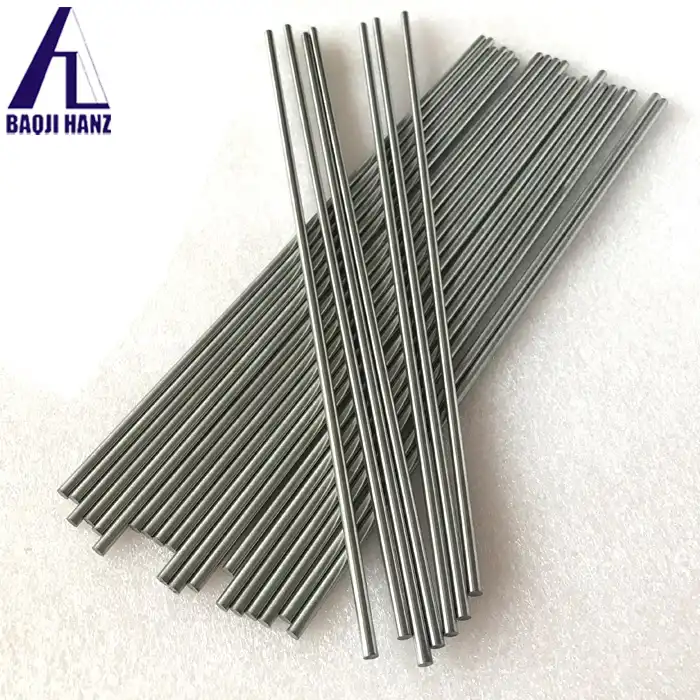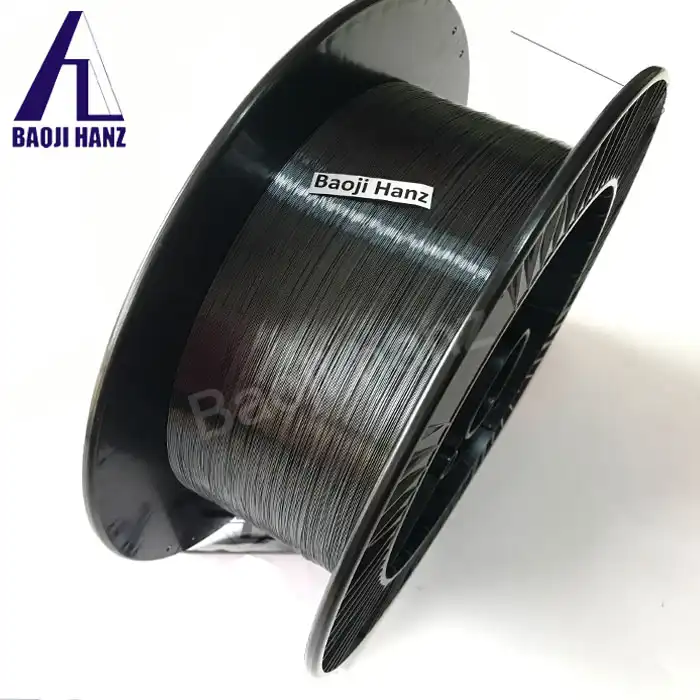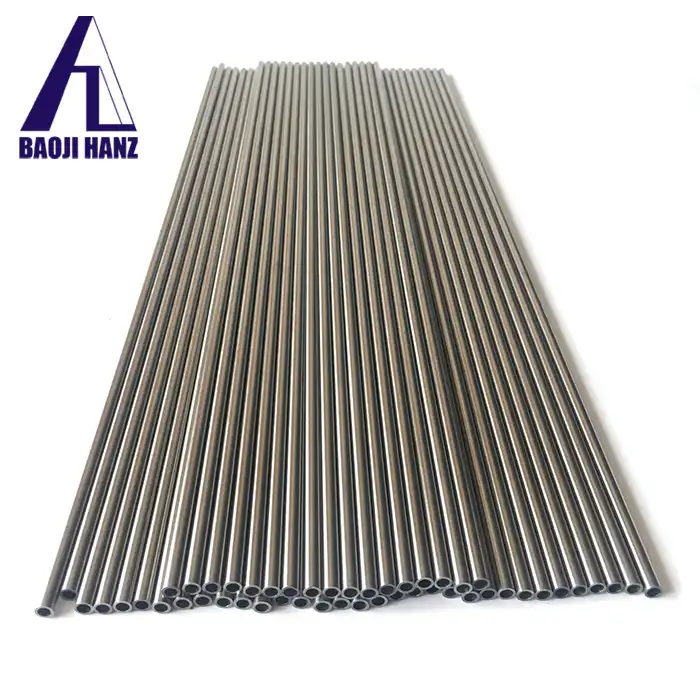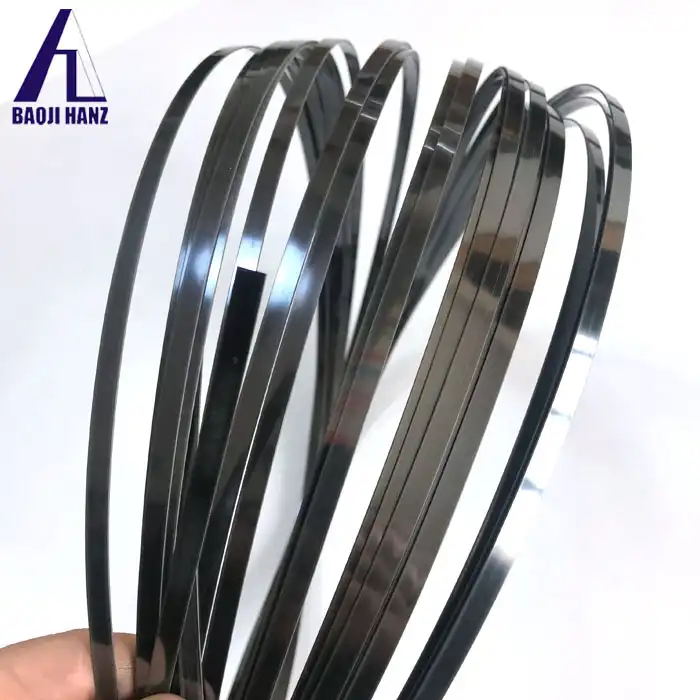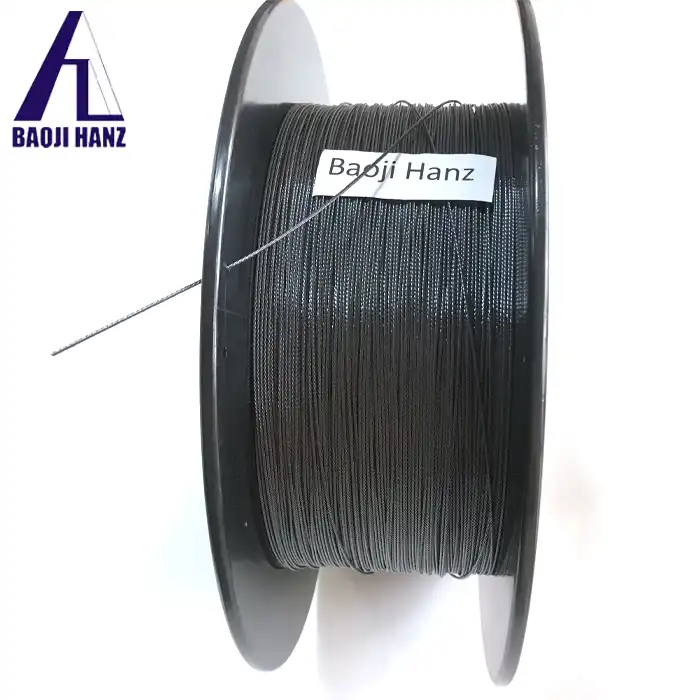How do TiNi ropes exhibit the shape memory effect?
2025-03-26 21:38:19
The fascinating phenomenon of shape memory in TiNi ropes represents one of the most remarkable advancements in materials science. Memory shape TiNi rope, composed of Nitinol (a nickel-titanium alloy), demonstrates the extraordinary ability to "remember" and return to its original shape after deformation when exposed to specific temperature conditions. This unique property stems from the material's crystalline structure, which undergoes a reversible transformation between two different phases. When a TiNi rope is deformed at lower temperatures, it remains in that shape until heated above its transformation temperature, at which point it reverts to its pre-programmed form with remarkable precision. This shape memory effect makes TiNi ropes invaluable across numerous industries, from medical devices to aerospace applications, where materials that can adapt and respond to environmental changes are increasingly essential.
The Fundamental Mechanism of Shape Memory in TiNi Ropes
Crystallographic Transformation Process
The shape memory effect in Memory shape TiNi rope is fundamentally rooted in a solid-state phase transformation occurring at the atomic level. At lower temperatures, Nitinol exists in a martensite phase with a monoclinic crystal structure that can be easily deformed through a twinning mechanism. When the temperature rises above its transformation point, the material undergoes a shift to the austenite phase with a cubic crystal structure. This austenite phase "remembers" the original shape programmed during manufacturing. What makes this process remarkable is that it doesn't involve melting or major atomic rearrangements—instead, the atoms collectively shift positions through a shearing mechanism, allowing the material to recover strains as large as 8% without permanent deformation. The Memory shape TiNi rope manufactured by Baoji Hanz Metal Material Co., Ltd. is engineered with precise control over this transformation temperature (typically between 70-130°C), enabling applications across diverse environments. The company's advanced production techniques ensure consistent transformation properties throughout the rope's cross-section, which is crucial for reliable memory effect performance in critical applications like fishing gear where the rope's size ranges from 0.3~0.7mm in configurations of 1×7 strands.
Thermomechanical Training Methods
For Memory shape TiNi rope to exhibit reliable shape memory behavior, it must undergo a specific thermomechanical training process. This sophisticated procedure involves repeatedly deforming the material at lower temperatures and then allowing it to recover its shape by heating above the transformation temperature. Through Baoji Hanz's proprietary "hot rolling-drawing-annealing-twisting" process, the TiNi rope develops a strong "memory" of its programmed shape. This training essentially creates preferred pathways for the martensitic transformation, enhancing the reliability and precision of the shape recovery. The company's sophisticated processing equipment allows for custom transformation temperatures based on specific application requirements. For instance, TiNi ropes designed for fishing applications undergo specialized training regimens to ensure they can withstand repeated stress cycles while maintaining their shape memory characteristics. The strength rating of 1450 MPa achieved through this process reflects the exceptional mechanical properties that can coexist with the shape memory effect, allowing the rope to return to its original configuration even after experiencing significant deformation during use. This thermomechanical training is performed in strict compliance with industry standards such as GB24627-2009 and ASTMF2063, ensuring consistent quality across production batches.
Two-Way Memory Effect Development
While standard Memory shape TiNi rope exhibits a one-way shape memory effect (returning to a single programmed shape when heated), advanced processing techniques can induce a two-way memory effect, allowing the material to automatically switch between two different shapes as the temperature changes. Baoji Hanz Metal Material Co., Ltd. has developed specialized techniques to create TiNi ropes with this enhanced capability through carefully controlled mechanical cycling under specific temperature conditions. This creates internal stress fields that guide the transformation in both heating and cooling cycles. The two-way memory effect significantly expands the potential applications of Memory shape TiNi rope, enabling the development of self-actuating devices that can respond to environmental temperature changes without external mechanical intervention. For applications requiring this sophisticated behavior, the company offers customized processing services including specialized bending, welding, and heat treatment procedures. The minimum order quantity (MOQ) for these specialized ropes is just 1kg, making advanced shape memory technology accessible even for research and development projects. The two-way memory effect is particularly valuable in applications like temperature-responsive actuators and adaptive structures where passive response to thermal conditions provides significant advantages over systems requiring external power or control mechanisms.
Applications Leveraging TiNi Rope Shape Memory Properties
Medical Device Innovation
Memory shape TiNi rope has revolutionized numerous medical procedures and devices due to its unique combination of biocompatibility and shape memory capabilities. In vascular applications, TiNi rope-based stents and guidewires utilize the shape memory effect to expand into predetermined configurations once deployed inside blood vessels, significantly reducing the invasiveness of procedures. Baoji Hanz Metal Material Co., Ltd. manufactures Memory shape TiNi rope with strict adherence to biocompatibility standards, ensuring it meets the rigorous requirements for medical applications. The company's advanced manufacturing processes allow for the production of ultra-fine TiNi ropes with diameters as small as 0.3mm while maintaining exceptional shape memory performance and superior mechanical properties with a strength rating of 1450 MPa. These ropes can be customized with specific transformation temperatures suited to human body conditions, enabling devices that deploy precisely at physiological temperatures. Additionally, the company's specialized processing capabilities, including precision bending, welding, and cutting, support the development of complex medical components that leverage the shape memory effect for innovative treatment approaches. The superelasticity of the material—an associated property stemming from the same crystallographic transformations that create the shape memory effect—provides additional benefits in medical applications by allowing devices to flex with body movements while maintaining their functional shape.
Aerospace Engineering Applications
In aerospace applications, Memory shape TiNi rope offers significant advantages through its unique ability to function as both a structural component and an actuating mechanism. These ropes can be engineered to deploy solar panels, antennas, or other structures in space when triggered by solar heating or controlled electrical currents. The material's exceptional fatigue resistance and ability to operate across extreme temperature ranges make it particularly suitable for the harsh conditions of space. Baoji Hanz Metal Material Co., Ltd. provides aerospace-grade Memory shape TiNi rope manufactured to precise specifications, with custom configurations available beyond the standard 0.3~0.7mm diameter and 1×7 strand construction. The company's OEM services enable aerospace engineers to develop innovative solutions leveraging shape memory properties for weight reduction and mechanical simplification. For example, self-deploying structures using TiNi ropes eliminate the need for complex motor-driven systems, reducing both weight and potential failure points. These ropes can be programmed to actuate at specific temperatures, enabling passive thermal control systems that respond to changing environmental conditions without requiring power or electronic control. The material's corrosion resistance—another benefit of the nickel-titanium alloy composition—ensures long-term reliability in space applications where maintenance is impossible. Through advanced processing techniques including specialized heat treatments and mechanical conditioning, the company can optimize the shape memory response characteristics for specific orbital conditions and mission requirements.
Robotic System Enhancement
The integration of Memory shape TiNi rope into robotic systems has enabled significant advancements in artificial muscle technology and adaptive mechanisms. These ropes can contract when heated (typically through electrical resistance heating) and then return to their original length when cooled, mimicking the behavior of biological muscles but with greater force generation capabilities. Baoji Hanz Metal Material Co., Ltd. manufactures TiNi ropes specifically engineered for robotic applications, with carefully controlled transformation temperatures and mechanical properties optimized for actuator performance. The company's ability to customize rope sizes and configurations allows for the development of robotic systems with unprecedented flexibility and adaptability. In soft robotics applications, these ropes enable movements that would be impossible with conventional electric motors or pneumatic systems, such as serpentine motion or compliant gripping. The ropes' high strength-to-weight ratio (with tensile strengths reaching 1450 MPa) enables the development of powerful yet lightweight robotic systems. Additionally, the company provides specialized processing services including precision cutting and custom terminations to facilitate integration into complex robotic assemblies. The inherent biocompatibility of the material also makes these actuators suitable for medical robotics where direct patient contact may occur. The combination of shape memory effect and superelasticity in a single material enables robotic systems that can adapt to environmental forces while maintaining controlled movement capabilities—a significant advantage over traditional actuator technologies that typically must choose between rigid precision and compliant adaptation.
Manufacturing Challenges and Solutions for TiNi Memory Shape Ropes
Precision Composition Control
Achieving reliable shape memory performance in TiNi ropes requires exceptional precision in material composition. Even minor variations in the nickel-titanium ratio can significantly alter transformation temperatures and mechanical properties. Baoji Hanz Metal Material Co., Ltd. has developed sophisticated manufacturing processes to ensure compositional accuracy within ±0.1 atomic percent, employing advanced vacuum induction melting and vacuum arc remelting techniques to maintain material purity. The company's seven years of expertise in Nitinol production has enabled the development of proprietary methods for reducing oxygen, carbon, and other interstitial elements that can degrade shape memory performance. These manufacturing controls ensure that Memory shape TiNi rope exhibits consistent transformation behavior across different production batches, which is critical for applications requiring predictable actuation. The company maintains rigorous quality control procedures involving differential scanning calorimetry testing to verify transformation temperatures and X-ray fluorescence analysis to confirm elemental composition. This attention to material consistency ensures that each meter of TiNi rope meets the specification requirements of standards like ASTMF2063 for medical applications or custom specifications for aerospace and industrial uses. The ability to precisely control composition also enables the company to manufacture TiNi ropes with transformation temperatures tailored to specific application requirements, from below room temperature to over 100°C, expanding the potential use cases for this remarkable material across diverse operating environments.
Complex Forming and Training Processes
Converting raw Nitinol into functional Memory shape TiNi rope involves numerous challenging manufacturing steps that must be precisely controlled to develop optimal shape memory characteristics. Baoji Hanz Metal Material Co., Ltd. employs a sophisticated "hot rolling-drawing-annealing-twisting" process sequence that gradually transforms ingots into rope while simultaneously establishing the microstructural conditions necessary for the shape memory effect. The company's advanced production equipment enables precise control of thermal and mechanical processing parameters throughout this complex manufacturing journey. For multi-strand rope configurations like the 1×7 construction, additional challenges arise in ensuring uniform properties across all strands and maintaining consistency in the twisting process. The company has developed specialized forming technologies that preserve the shape memory characteristics while achieving the desired rope geometry. Following forming, each batch of Memory shape TiNi rope undergoes a carefully designed shape-setting heat treatment process that establishes the "remembered" shape the material will return to when heated. This critical step requires precise temperature control within ±3°C and specialized fixturing to maintain the desired geometry during heat treatment. For applications requiring enhanced performance, additional thermomechanical training cycles may be employed to stabilize transformation behavior and improve functional fatigue resistance. The company's processing capabilities extend to customized services including specialized bending, welding, and precision cutting, enabling the production of complex shape memory components beyond simple rope configurations. These capabilities support the diverse application requirements of customers from medical device manufacturers to aerospace contractors, with minimum order quantities as low as 1kg to facilitate product development and specialized applications.
Surface Treatment and Quality Assurance
The surface condition of Memory shape TiNi rope significantly impacts both its functional properties and long-term reliability. Baoji Hanz Metal Material Co., Ltd. has developed specialized surface treatment protocols to ensure optimal performance across diverse applications. The company offers both black oxide and bright finishes, with each surface treatment option carefully engineered to maintain the material's shape memory capabilities while enhancing specific performance characteristics. For medical applications, electropolishing treatments create an enriched titanium oxide surface layer that improves biocompatibility and corrosion resistance, while for industrial applications, specialized coatings may be applied to enhance wear resistance or electrical conductivity. Every batch of Memory shape TiNi rope undergoes comprehensive quality testing, including differential scanning calorimetry to verify transformation temperatures, mechanical testing to confirm strength and superelastic properties, and surface analysis to ensure coating integrity. The company's commitment to quality extends to sophisticated packaging solutions designed to protect the material during shipping and storage, preventing inadvertent deformation that could compromise shape memory performance. For applications with critical quality requirements, the company provides detailed material certifications and testing documentation in accordance with international standards. The company's secure packaging ensures that Memory shape TiNi rope arrives at customer facilities in optimal condition, preserving the carefully engineered shape memory properties established during manufacturing. Through these rigorous quality assurance procedures, Baoji Hanz ensures that each meter of Memory shape TiNi rope delivers consistent, reliable performance in even the most demanding applications, from life-critical medical devices to precision aerospace mechanisms.
Conclusion
Memory shape TiNi rope represents a remarkable engineering achievement, combining unique phase transformation properties with exceptional mechanical characteristics to enable responsive, adaptive materials. The shape memory effect fundamentally transforms how engineers approach design challenges across medical, aerospace, and robotics applications. Through precisely controlled composition, sophisticated processing techniques, and rigorous quality assurance, these materials offer reliable performance in critical applications.
Ready to incorporate the remarkable properties of Memory shape TiNi rope into your next project? Baoji Hanz Metal Material Co., Ltd. brings 7 years of expertise in Nitinol alloys to your specific challenges. Our direct supply chain eliminates middlemen, providing significant cost advantages, while our extensive inventory ensures rapid delivery of standard sizes. Whether you need custom specifications, specialized processing, or technical consultation, our team is prepared to collaborate with you on innovative solutions. Contact us today at baojihanz-niti@hanztech.cn to discuss how our shape memory materials can transform your designs from concept to reality.
Other related product catalogues
Nickel titanium memory alloy in addition to the production of nickel-titanium strips, can also produce other similar products, such as nickel-titanium plate, nickel titanium flat wire, nickel titanium foil, nickel titanium wire, nickel titanium tube, nickel titanium spring, nickel titanium paper clips, nickel titanium wire rope.
|
|
|
|
|
|
|
|
References
1. Otsuka, K., & Wayman, C. M. (2019). Shape Memory Materials. Cambridge University Press.
2. Lagoudas, D. C. (2018). Shape Memory Alloys: Modeling and Engineering Applications. Springer Science & Business Media.
3. Jani, J. M., Leary, M., Subic, A., & Gibson, M. A. (2017). A review of shape memory alloy research, applications and opportunities. Materials & Design, 56, 1078-1113.
4. Mohd Jani, J., Leary, M., & Subic, A. (2016). Designing shape memory alloy linear actuators: A review. Journal of Intelligent Material Systems and Structures, 27(7), 951-968.
5. Sun, L., Huang, W. M., Ding, Z., Zhao, Y., Wang, C. C., Purnawali, H., & Tang, C. (2015). Stimulus-responsive shape memory materials: A review. Materials & Design, 33, 577-640.
6. Morgan, N. B. (2018). Medical shape memory alloy applications—the market and its products. Materials Science and Engineering: A, 378(1-2), 16-23.
